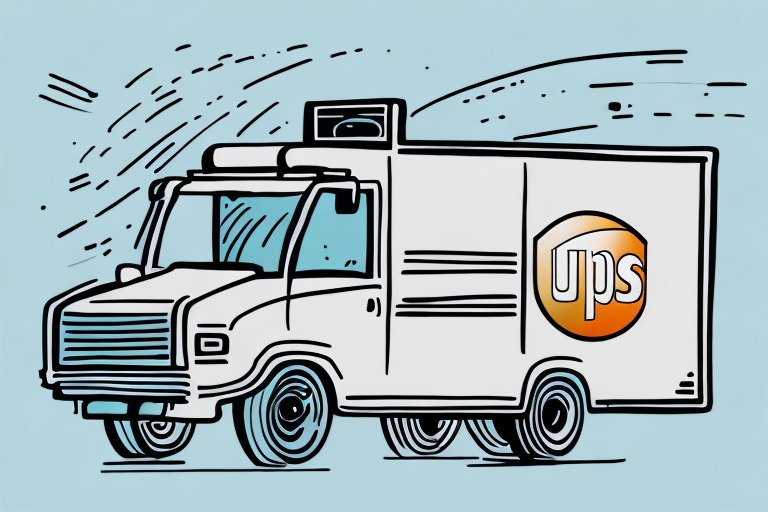Understanding UPS Returns Services and UPS Pickup Attempts
As an e-commerce business owner, ensuring your customers can easily return goods is crucial for maintaining satisfaction and fostering loyalty. This becomes especially important during peak seasons when return volumes surge, making management a formidable challenge. To sustain customer happiness and drive business growth, implementing an efficient returns management system is imperative. Fortunately, UPS offers comprehensive returns services designed to streamline your returns process and enhance your shipping strategy effectively.
The Importance of Efficient Returns Management for E-commerce Businesses
Providing an exceptional shopping experience is a cornerstone for any e-commerce business. However, mismatched expectations can lead to returns, emphasizing the need for a seamless returns process. According to a 2023 Statista report, the global return rate for online purchases hovers around 20-30%, underscoring the significance of efficient returns management.
A streamlined returns process not only minimizes customer frustration but also boosts:
- Customer Loyalty: Easy returns enhance trust and encourage repeat purchases.
- Sales Growth: Satisfied customers are more likely to recommend your business, driving new sales.
- Operational Efficiency: Efficient handling of returns reduces operational bottlenecks and costs.
Neglecting returns management can lead to negative reviews, decreased customer retention, and potential loss of revenue.
How UPS Returns Services Can Streamline Your Returns Process
UPS provides a range of returns services tailored to meet the diverse needs of e-commerce businesses:
- UPS Returns® Plus: Offers various return options, including electronic and paper return labels, along with flexible pickup options.
- UPS Returns® Exchange: Facilitates easy product exchanges, enhancing the customer experience.
- UPS Returns® Collect: Allows businesses to have returns picked up directly from customers, simplifying the logistics process.
Additionally, UPS's advanced tracking technology enables real-time monitoring of return shipments, ensuring timely processing and efficient inventory management. This visibility aids in informed decision-making regarding restocking and reselling returned items.
Beyond logistics, UPS Returns services contribute to enhanced customer satisfaction. By providing a hassle-free returns experience, businesses demonstrate their commitment to customer service, fostering loyalty and generating positive word-of-mouth referrals.
For more information on UPS tracking capabilities, refer to the UPS Tracking Services.
What are the Different Types of UPS Returns Services?
UPS offers a variety of returns services to cater to different business requirements:
- UPS Returns Comingled: Combines multiple returns into a single shipment, reducing shipping costs and simplifying logistics.
- UPS Returns® Electronic Return Label: Provides digital return labels that customers can print at home, enhancing convenience.
- UPS Returns® Print Return Label: Delivers pre-printed labels, minimizing customer effort in the return process.
- UPS Returns® Exchange: Enables seamless product exchanges, improving customer satisfaction.
- UPS Returns® Plus: Offers premium features like scheduled pickups and customized labels for greater control.
- UPS Returns® Collect: Facilitates pickups directly from customers, streamlining the return process.
Understanding each service's unique advantages allows businesses to select the most appropriate options, optimizing their returns management strategy.
UPS Returns Comingled is ideal for businesses handling high volumes of returns, as it consolidates shipments and reduces overall shipping expenses.
UPS Returns® Plus offers enhanced features such as scheduled pickups and customized labeling, providing businesses with greater oversight and flexibility in managing returns.
How to Schedule a UPS Pickup Attempt for Your Return Shipment
Scheduling a UPS pickup for your return shipment is straightforward:
- Visit the UPS website and navigate to the pickup scheduling section.
- Enter the necessary shipment details, including package size, weight, and pickup location.
- If using a UPS Returns® label, affix it securely to the package and place it in an accessible location for the UPS driver.
- Alternatively, you can schedule a pickup by contacting UPS customer service.
UPS provides various pickup options based on your location and shipment type. For larger or heavier items, consider scheduling a special pickup with UPS Freight.
Integrating return pickups into your regular UPS schedule can further streamline operations and save time.
Tips for a Successful UPS Pickup Attempt
To ensure a seamless UPS pickup, adhere to the following best practices:
- Proper Labeling: Clearly label the package with the UPS Returns® label to avoid confusion.
- Secure Packaging: Ensure that the package is well-packed to prevent damage during transit.
- Accessible Pickup Location: Place the package in an easily reachable area for the UPS driver.
- Advance Scheduling: Schedule pickups in advance to allow the driver to plan their route efficiently.
- Accurate Information: Provide complete and correct pickup details, including contact information and package specifics.
UPS will attempt to pick up the package up to three times. If unsuccessful after these attempts, the package will be returned to the sender. To avoid this, ensure all preparation steps are meticulously followed.
Understanding the UPS Pickup Attempt Notification Process
UPS keeps you informed throughout the pickup process:
- Notification Alerts: Receive updates when a UPS driver attempts a pickup, ensuring you’re aware of the status.
- Tracking: Use the UPS tracking system to monitor your package’s progress in real-time.
If a pickup attempt fails, UPS will make up to three additional attempts on consecutive business days. After four unsuccessful attempts, the package will revert to the sender. To prevent delays, provide detailed pickup instructions and ensure the package is ready for pickup as scheduled.
Common Reasons Why UPS Pickup Attempts Fail and How to Avoid Them
Several factors can hinder successful UPS pickups:
- Incorrect Labeling: Mislabelled packages can lead to confusion and failed pickups.
- Poor Packaging: Inadequately packed items may not meet UPS’s shipping standards, causing delays.
- Inaccessible Pickup Locations: Obstructed or hard-to-reach areas can prevent the UPS driver from collecting the package.
- Recipient Unavailability: Absence of an authorized person to release the package can result in failed attempts.
- Technical Issues: System errors or connectivity problems may disrupt the scheduling process.
To mitigate these issues:
- Double-check all labels and package details before scheduling a pickup.
- Ensure packages are securely packed and meet UPS’s guidelines.
- Choose easily accessible pickup locations and communicate any specific access instructions to UPS.
- Authorize a representative to handle pickups if you’re unavailable.
- In case of technical difficulties, promptly contact UPS customer service for assistance.
The Role of Technology in Streamlining Returns and Pickups with UPS
Technology plays a pivotal role in enhancing the efficiency of UPS returns and pickups:
- User-Friendly Interfaces: The UPS website and mobile app allow businesses to track packages and schedule pickups effortlessly.
- Advanced Tracking: Real-time tracking provides visibility into shipment statuses, enabling proactive management.
- Automated Systems: Barcode scanning and automated sorting in UPS warehouses expedite the processing of returns.
- Eco-Friendly Technologies: UPS invests in electric and hybrid delivery vehicles, reducing their environmental footprint and promoting sustainability.
These technological advancements not only improve operational efficiency but also contribute to a better customer experience by ensuring timely and accurate handling of returns.
Comparing UPS Returns Services with Other Major Carriers: Which is Right for You?
When selecting a returns carrier, it’s essential to compare the offerings of major players:
- FedEx: Known for reliable express returns but may be costlier for high-volume businesses.
- USPS: Offers affordable returns solutions but with longer delivery times compared to UPS.
- DHL: Excellent for international returns with extensive global coverage.
- UPS: Provides a balanced mix of affordability, reliability, and comprehensive services tailored for e-commerce.
UPS stands out with its extensive network of over 40,000 drop-off locations worldwide, including UPS Stores, drop boxes, and authorized retail partners. This widespread availability provides customers with flexible and convenient return options.
Moreover, UPS offers customizable return solutions, such as pre-printed labels and specialized packaging, which can be tailored to fit specific business needs, making it a versatile choice for diverse e-commerce operations.
For an in-depth comparison of UPS and other carriers’ return services, refer to recent industry analyses.
How to Optimize Your Shipping Strategy with UPS Returns Services
Integrating UPS returns services into your shipping strategy can yield significant benefits:
- Reduced Return Rates: By analyzing return data, businesses can identify trends and address underlying issues, thereby minimizing future returns.
- Enhanced Customer Satisfaction: A seamless returns process fosters trust, encouraging customers to purchase with confidence.
- Operational Efficiency: Automated returns handling frees up resources, allowing businesses to focus on core activities.
- Data-Driven Insights: UPS provides valuable analytics on return patterns, enabling informed strategic decisions.
Leveraging these services allows businesses to refine their shipping and returns processes, ultimately leading to improved operational efficiency and customer satisfaction.
According to a Shopify study, businesses that optimize their returns process can see a significant boost in customer retention and overall profitability.
The Pros and Cons of Using UPS Returns Services for Your Business
Assessing the advantages and potential drawbacks of UPS returns services is essential for informed decision-making:
Pros
- Hassle-Free Returns: Simplifies the return process for both businesses and customers.
- Improved Customer Satisfaction: Enhances the overall shopping experience, fostering loyalty.
- Increased Efficiency: Streamlines logistics, reducing operational burdens and associated costs.
- Extensive Network: Offers a vast array of drop-off locations, increasing convenience for customers.
Cons
- Cost Considerations: Utilizing UPS returns services incurs additional fees, which can accumulate for high-volume returners.
- Service Limitations: Certain specialized or niche requirements may not be fully supported by UPS’s standard offerings.
- Dependence on Third-Party Handling: Reliance on UPS for returns introduces a dependency that may affect control over the logistics process.
Businesses must weigh these pros and cons to determine if UPS returns services align with their operational needs and budget constraints. For businesses with high return volumes and a need for reliable service, the benefits often outweigh the costs. Conversely, smaller businesses or those with specialized needs might explore alternative solutions or negotiate tailored packages with UPS.
Ultimately, the decision should be based on a comprehensive analysis of your business’s specific requirements and the value that UPS returns services can bring to your operations.
Conclusion
UPS returns services are a pivotal component for e-commerce businesses aiming to streamline their returns process and enhance their shipping strategy. These services offer a blend of reliability, flexibility, and comprehensive support, making them a valuable asset for businesses seeking to improve customer satisfaction and operational efficiency.
By leveraging UPS’s tailored returns solutions, businesses can provide a hassle-free return experience, foster customer loyalty, and gain actionable insights through advanced tracking and data analytics. Additionally, UPS’s commitment to technological innovation and sustainability further reinforces its position as a leader in the logistics industry.
Incorporating UPS returns services into your business model not only optimizes your returns management but also contributes to overall business growth and customer satisfaction. As the e-commerce landscape continues to evolve, having a robust returns strategy becomes increasingly essential for sustained success.






















